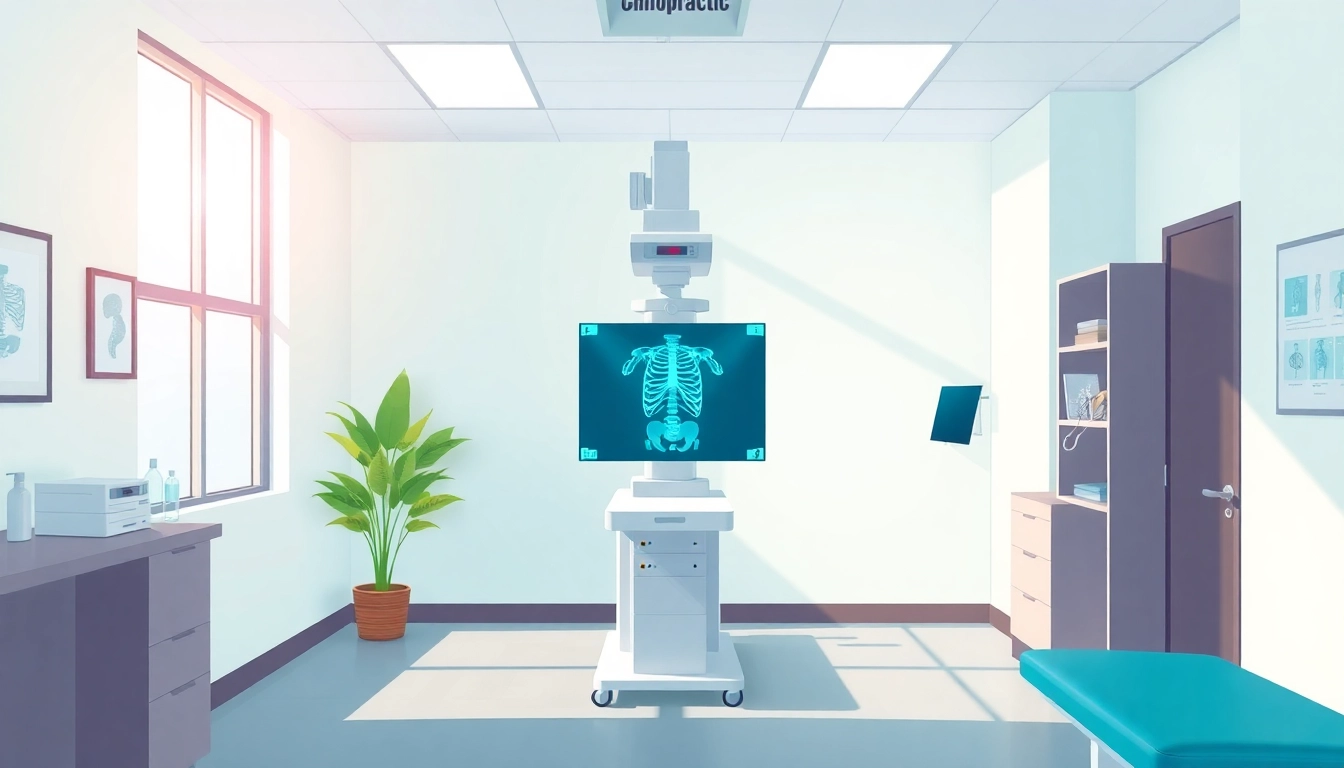
Understanding Digital X-Ray Technology in Chiropractic Care
In the modern chiropractic practice, the utilization of advanced imaging techniques is essential for accurate diagnosis and effective treatment plans. One of the foremost technologies being integrated is digital X-ray. This technology has revolutionized how chiropractors diagnose and monitor the health of their patients. By offering improved image quality, enhanced patient safety, and faster processing times, digital X-ray systems represent a significant advancement over traditional film X-rays. For chiropractors seeking to improve their diagnostic capabilities, selecting the best digital x-ray system for chiropractors is a critical step. Let’s delve deeper into the essential aspects of digital X-ray technology and what it offers to chiropractic care.
What is Digital X-Ray Technology?
Digital X-ray technology employs digital imaging sensors to produce radiographs that are stored electronically, as opposed to traditional methods which rely on film. This system captures detailed images of the internal structures of the body, allowing chiropractors to identify abnormalities in bone structure, alignment, and any potential injuries. The digital images are produced almost instantaneously, significantly reducing waiting times for patients. Furthermore, they can be easily shared and stored, making them valuable for referrals and ongoing patient management.
Benefits of Digital X-Ray Systems for Chiropractors
- Enhanced Image Quality: Digital X-rays provide clearer images with greater detail compared to traditional X-rays, which aids in better diagnosis.
- Reduced Radiation Exposure: Digital systems typically require less radiation than conventional film X-rays, making them safer for patients.
- Instant Results: The rapid processing time allows chiropractors to view images almost immediately after the scan, enabling prompt decision-making.
- Environmentally Friendly: Digital X-ray systems eliminate the need for chemical processing, thus being more eco-friendly.
- Enhanced Accessibility: Digital images can be easily stored, retrieved, and shared, facilitating better communication between healthcare providers.
Common Misconceptions About Digital X-Rays
Despite the advantages, there are several misconceptions about digital X-ray technology in chiropractic care:
- Cost: Some practitioners assume digital X-ray systems are prohibitively expensive, while in reality, they provide long-term savings through reduced film and processing costs.
- Complexity: Many believe that digital systems are challenging to operate, but most modern systems are user-friendly and require minimal training.
- Image Quality: There is a belief that film X-rays are superior; however, digital images often surpass traditional quality in clarity and detail.
Key Features to Look for in the Best Digital X-Ray System for Chiropractors
When evaluating digital X-ray systems, chiropractors need to consider several critical features that impact both clinical effectiveness and operational efficiency.
Image Quality and Resolution
High resolution is paramount when selecting a digital X-ray system. The ability to capture superior images is essential for diagnosing conditions accurately. Look for systems that offer at least 16 bits of grayscale, which provides a higher number of shades and greater detail in images. Additionally, advanced features such as edge enhancement and noise reduction can further improve image quality.
User-Friendly Interface and Accessibility
The interface of a digital X-ray system should be intuitive, minimizing the learning curve for staff. Look for systems with touch-screen capabilities, customizable workflows, and easy access to images. This can streamline the process and ensure that chiropractors can focus on patient care rather than technical issues.
Integration with Practice Management Software
Seamless integration with existing practice management software is a crucial consideration. A system that can easily connect with electronic health record (EHR) systems and billing software will enhance overall office efficiency. This integration facilitates quick access to patient records, ensures accurate billing, and improves communication between practitioners.
Comparing Top Digital X-Ray Systems for Chiropractors
The market for digital X-ray systems is growing, and chiropractors have numerous options. Comparing different systems based on specific criteria is essential to make an informed choice.
Price Range and Cost-Effectiveness
Price can vary widely among different digital X-ray systems. Factors such as image quality, system features, and extended warranties influence cost. It’s advisable to assess your practice’s budget and consider the long-term financial benefits that a more expensive, higher-quality system may provide, such as improved patient outcomes and lower operational costs.
Customer Reviews and Satisfaction
Customer feedback can provide valuable insights into the functionality and reliability of different digital X-ray systems. Look for reviews and case studies from fellow chiropractors. This peer validation can guide you in understanding the practical performance of a system outside of sales presentations.
Leading Brands and Their Features
Several leading brands manufacture digital X-ray systems for chiropractors. Researching their specific features can help in making the best choice:
- Carestream Health: Known for high-resolution images and integration capabilities with EHR systems.
- Fujifilm: Offers compact designs and efficient workflows, along with excellent image quality.
- Konica Minolta: Features user-friendly interfaces and versatile imaging options.
- Siemens: Provides advanced technology with cutting-edge innovation, ensuring optimal results.
Implementation Tips for Chiropractors
Once you have selected a digital X-ray system, implementing it effectively within your practice is vital. This entails proper installation, staff training, and adherence to compliance standards.
Installing Your Digital X-Ray System
The installation process can vary depending on the chosen system. However, following general guidelines can maximize efficiency:
- Ensure proper electrical and physical space requirements for the equipment.
- Work with certified technicians for installation to avoid operational issues.
- Conduct thorough testing of the system post-installation to ensure it functions correctly.
Training Staff for Optimal Use
Staff training is crucial to ensure that everyone can operate the digital X-ray system effectively. Implement the following strategies:
- Schedule comprehensive training sessions covering image capture, processing, and troubleshooting.
- Encourage ongoing education and training updates as software and technology evolve.
- Create a user manual tailored to your practice’s protocols for easy reference.
Best Practices for Ensuring Compliance
Chiropractors must comply with local and federal regulations regarding X-ray usage. Best practices include:
- Keeping up-to-date with the latest laws and guidelines from regulatory bodies.
- Maintaining accurate records of equipment maintenance and safety checks.
- Implementing a patient safety protocol that minimizes exposure.
Measuring Success: Performance Metrics for Digital X-Ray Systems
After implementing a digital X-ray system, it is essential to measure its impact on your chiropractic practice. Tracking specific performance metrics can provide insights into the system’s effectiveness.
Tracking Diagnostic Accuracy and Efficiency
Evaluating how well the digital X-ray system enhances diagnostic accuracy is vital. Compare your diagnostic outcomes before and after implementation. Metrics to consider include:
- Rate of correct diagnoses made using digital X-ray images.
- Speed of diagnosis turnaround for patient treatment plans.
Patient Satisfaction and Experience
Patient feedback can provide insights into their experience with the X-ray process. Utilize surveys to understand patients’ perceptions of the speed, comfort, and clarity of information provided. High patient satisfaction often correlates with better patient retention.
Return on Investment (ROI) Assessments
Assessing the ROI of your digital X-ray system involves evaluating both direct and indirect benefits. Consider factors such as:
- Cost savings from decreased film and processing needs.
- Increased patient throughput due to faster imaging times.
- Enhancements in diagnostic capabilities leading to better treatment outcomes.





